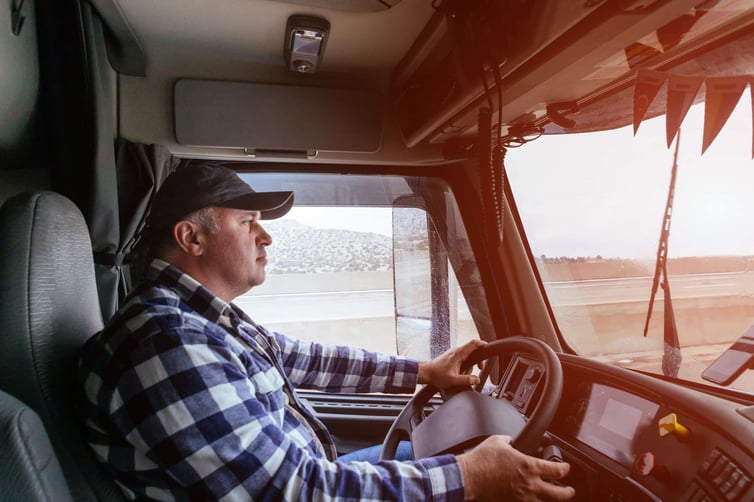
Lane change crashes can often be prevented if the truck driver recognizes the hazards that increase the risk of a crash and applies the right defensive driving techniques. Read the information below then ask yourself how you can improve your driving to prevent lane change crashes.
RECOGNIZE THE HAZARDS
 ENVIRONMENT
ENVIRONMENT
Traffic, in general, makes it challenging to manage the space around the truck. Traffic congestion and work zones increase the risk. Adverse weather, including mud, ice, and snow, reduces visibility.
 EQUIPMENT
EQUIPMENT
Blind spots all around the truck are a major factor in lane change crashes. Vibration can cause mirrors to become misaligned, affecting visibility, while damaged or inoperable mirrors and turn signals create hazards.
 PERSONAL BEHAVIORS
PERSONAL BEHAVIORS
Frequent or abrupt lane changes increase the risk of a crash. Likewise, forcing the truck into another driver’s lane or failing to use the mirrors and turn signal before changing lanes can lead to a crash.
KNOW THE DEFENSE
 MAINTAIN ONE LANE
MAINTAIN ONE LANE
Avoid frequent lane changes by keeping in your lane as much as possible. When a lane change is necessary, make sure it is safe and legal to do so. Use the mirrors and the “lean and look” method to make sure the adjacent lane is clear. Activate the turn signal well in advance, then change lanes gradually.
 MAINTAIN PROPER FOLLOWING DISTANCE
MAINTAIN PROPER FOLLOWING DISTANCE
Keep at least six seconds behind the vehicle in front and add more distance, if additional hazards are present. This allows you to check the side mirrors and manage the space around the vehicle.
 BE ATTENTIVE TO THE ROAD AHEAD
BE ATTENTIVE TO THE ROAD AHEAD
Make periodic, quick glances to mirrors, and then return your focus to the road ahead.
 OBSERVE PROPER SPEED FOR CONDITIONS
OBSERVE PROPER SPEED FOR CONDITIONS
Drive 2-3 MPH slower than the speed of traffic, not to exceed the speed limit. This creates a natural gap and allows you to perceive hazards faster and react without making abrupt lane changes.
 AVOID DISTRACTIONS
AVOID DISTRACTIONS
Put away mobile devices and avoid other distractions. This allows you to focus on the task of driving and be ready to react to hazards such as a passenger vehicle or truck cutting in front of your truck.
 VEHICLE INSPECTIONS
VEHICLE INSPECTIONS
Check side and fender-mounted mirrors before driving to ensure they are in proper working order and alignment. Pull over if the mirrors need adjusting. Repair inoperable equipment before leaving on a trip.
Note: These lists are not intended to be all-inclusive.
This material is intended to be a broad overview of the subject matter and is provided for informational purposes only. Great West Casualty Company does not provide legal advice to its insureds or other parties, nor does it advise insureds or other parties on employment-related issues, therefore the subject matter is not intended to serve as legal or employment advice for any issue(s) that may arise in the operations of its insureds or other parties. Legal advice should always be sought from legal counsel. Great West Casualty Company shall have neither liability nor responsibility to any person or entity with respect to any loss, action, or inaction alleged to be caused directly or indirectly as a result of the information contained herein.Reprinted with permission from Great West Casualty Company.

